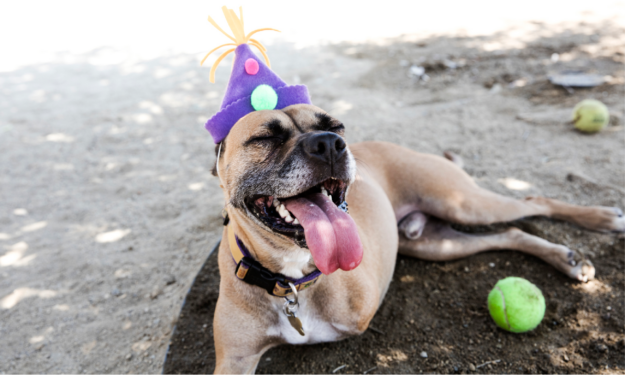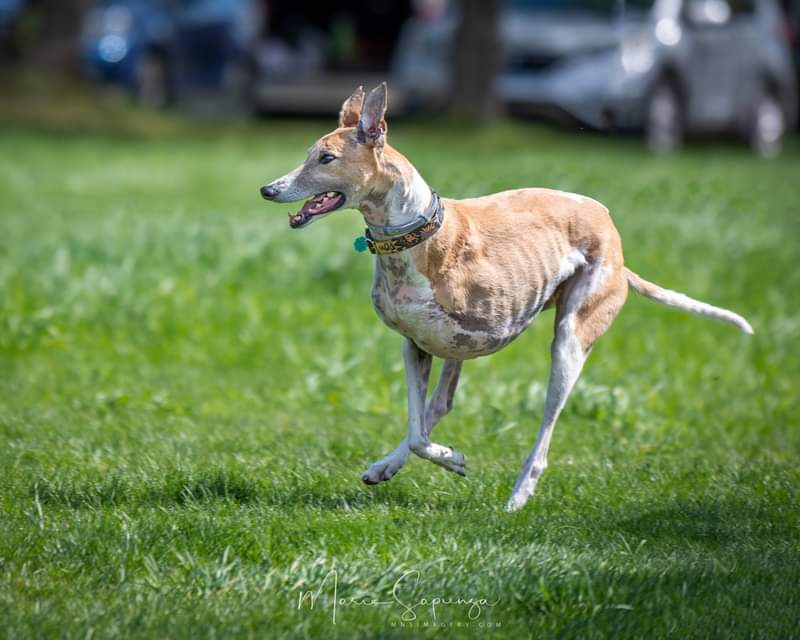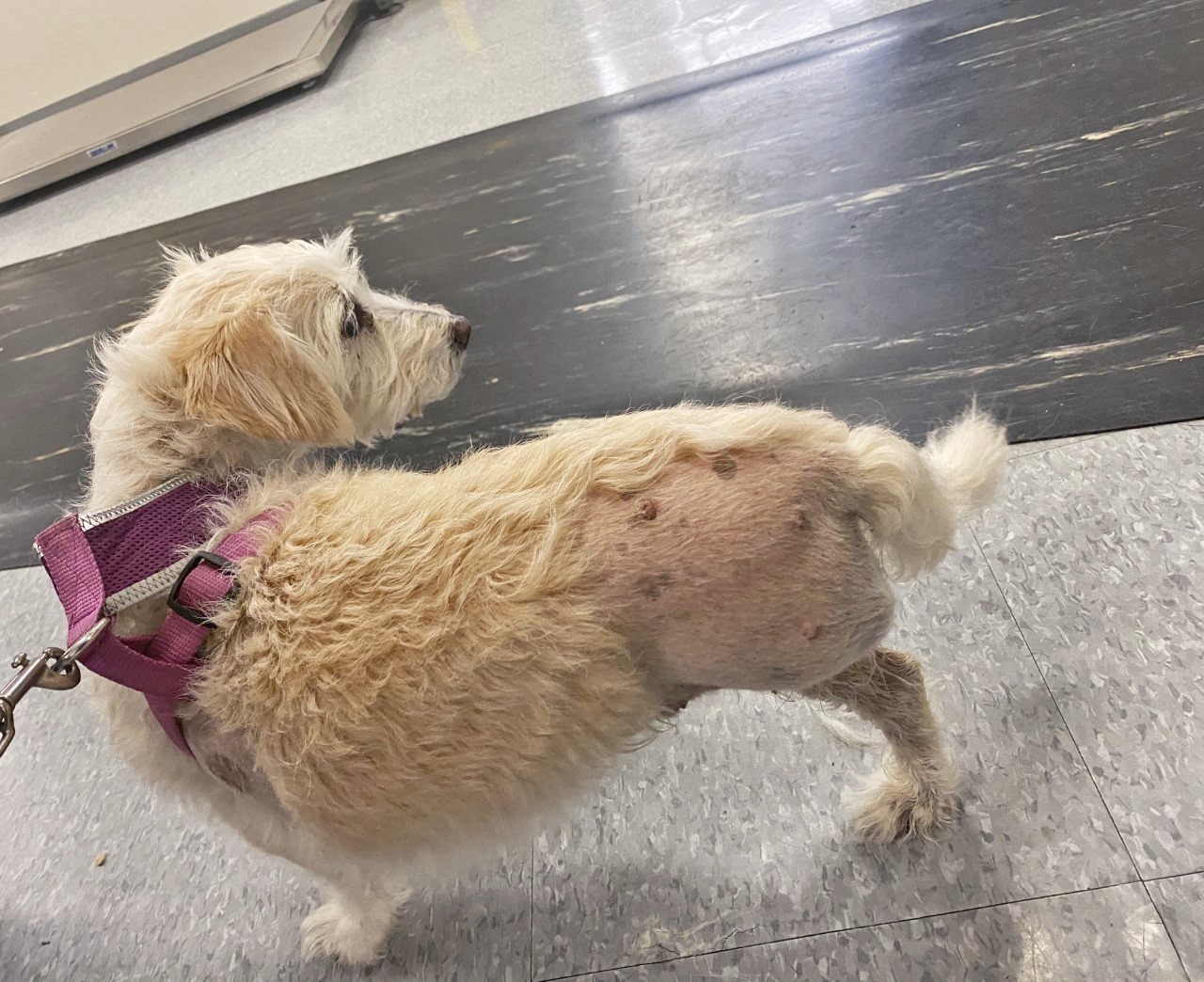Caring for a Three-Legged Dog

It’s a difficult decision – perhaps you’re considering adopting a three-legged dog (lovingly known as tripod or “tripawd” dogs), or you’re facing the recommendation to amputate your own pet’s leg. You may be worried about how your dog will adapt to the tripod life, and how you will endure the challenges of accommodating your pet’s special care needs.
Most of this apprehension is based on human experience. Losing one of our own limbs would be emotionally traumatic and involve a long adjustment period. Dogs live in the moment — they don’t care how they look, or whether they have four legs or none. What matters to dogs is their comfort, spending time with their owner, and finding joy in everyday life. Recognizing this fact can make your decision to amputate much easier.
Making the Decision
Some dogs are born with congenital limb abnormalities, but the majority have suffered an injury or illness that necessitated amputation. Some common reasons for limb amputation include:
- Traumatic injury — If pet owners cannot afford surgical repair, or the injury is beyond help, amputation is a viable option. If the injury can be repaired but will likely leave a pet disabled or in pain, amputation may offer better quality of life.
- Joint disease — Severe joint disease resulting from previous injury or congenital problems can result in chronic pain. Amputation may provide the best relief.
- Cancer — Bone and soft tissue tumors on limbs often invade local tissues and can only be completely removed by whole limb amputation. For dogs whose cancer has likely already spread, amputation can provide pain relief and comfort in their remaining days, weeks, or months.

A Greyhound who had a left forelimb amputation at Port City Veterinary Referral Hospital following a pathological fracture due to osteosarcoma. He then participated in a Sighthound fun run and “ran farther than anyone thought he would!”
Recovery From Surgery
Amputation can be a difficult surgery and recovery, but ultimately removes a pain and discomfort source and improves quality of life. Surgery is best performed by a specialty surgeon, but pet owners with financial constraints may want their primary veterinarian to perform the surgery. The surgery can be lengthy and may cause significant blood loss, so screening pets to ensure they are healthy prior to surgery is essential. Transfer to an emergency facility may be necessary for post-operative care if complications occur during surgery.
Pain control is extremely important before, during, and after surgery. Most dogs need strong opioid medications to control pain, ensure comfort, and speed up their recovery. A sling that will support your pet’s body weight is often recommended after surgery to assist in walking and to prevent a fall while their incision is still tender. Smaller dogs can be carried for the first few days, but they should be encouraged to move to help build up the muscle strength to walk on three legs.
Your veterinarian can refer you to a rehabilitation specialist, or advise you on slowly building up activity level during the weeks after surgery.

An Oncology patient at Port City Veterinary Referral Hospital who had her left rear leg amputated due to a metastatic Mast Cell Tumor. According to her owner, the surgery did not impeded her ability to stand, sit, or run!
How to Keep Your Tripod Dog Healthy
Three-legged dogs learn to move in ways that place abnormal stress on their remaining joints. This can lead to arthritis down the road, or exacerbate their arthritis. Dogs who struggle most are large breeds, overweight dogs, and chondrodysplastic (i.e., short-legged) breeds. You can help your dog’s joints stay healthy with the following tips:
- Maintain a healthy weight — Extra weight can significantly reduce a tripod’s mobility. This promotes inflammation and leads to faster tissue breakdown in remaining joints. Take weight loss seriously for these dogs. Discuss proper nutrition and weight control methods with your veterinarian.
- Encourage exercise — Exercise helps to strengthen muscles that support your dog’s joints. This is important for all dogs, but especially for tripods.
- Try physical therapy — Dogs struggling with mobility after surgery can be helped with physical therapy. PT uses various therapeutic methods to improve strength and promote healthy movement patterns under veterinary supervision.
- Start joint supplements — Glucosamine, chondroitin, and omega-3 fatty acids have proven effective in reducing joint disease inflammation and pain, and protecting joints from further damage. An injectable medication called Adequan that can easily be administered at home also can significantly improve and protect joint health.
- Use pain medications as needed — Pets with advanced joint disease need anti-inflammatory and analgesic medications for their comfort. These medications also encourage movement and exercise that builds up muscle and reduces their overall disability.
Equipment to Help Your Older Tripod Dog
While the majority of young and middle-aged dogs do wonderfully after amputation, they may require extra help as they age. Similarly, older dogs with arthritis or degenerative conditions undergoing amputation also will most likely need some mobility assistance. In most cases, simple household modifications or mobility aids can help. A few things to try include:
- Booties or toe grips to improve traction
- Rugs and runners to reduce slipping on hard floors
- Ramps and stairs for the car or indoor furniture
- Slings to assist in lifting and support
- Wheelchairs specifically designed for tripods
For more information on caring for a three-legged dog, or specific product recommendations, speak with your veterinarian. Visit the Tripawds website, an online community dedicated to helping pet owners and their pets adapt to tripod life. For specialized surgical and rehabilitation services, visit an Ethos Veterinary Health location near you.